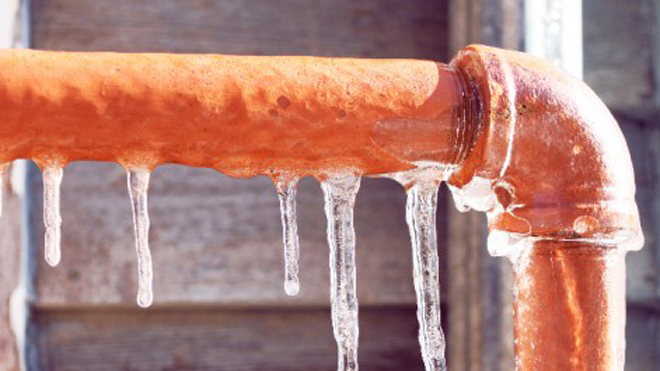Just how do you feel about Preventing and dealing with frozen pipes?

Cold weather can ruin your plumbing, especially by freezing pipelines. Below's how to avoid it from taking place and what to do if it does.
Introduction
As temperatures drop, the risk of icy pipes increases, potentially resulting in costly repairs and water damage. Comprehending how to avoid icy pipelines is critical for house owners in cold environments.
Comprehending Frozen Pipelines
What causes pipes to freeze?
Pipes freeze when revealed to temperature levels below 32 ° F (0 ° C) for extended periods. As water inside the pipes freezes, it broadens, putting pressure on the pipe walls and potentially causing them to burst.
Threats and problems
Icy pipelines can cause water disturbances, residential or commercial property damage, and pricey fixings. Ruptured pipelines can flooding homes and cause extensive architectural damage.
Indications of Frozen Pipes
Recognizing icy pipes early can prevent them from rupturing.
How to determine icy pipelines
Search for reduced water circulation from taps, uncommon odors or noises from pipes, and noticeable frost on subjected pipelines.
Avoidance Tips
Shielding vulnerable pipes
Wrap pipes in insulation sleeves or make use of warmth tape to shield them from freezing temperature levels. Focus on pipelines in unheated or external locations of the home.
Home heating methods
Keep interior areas properly heated, especially locations with pipes. Open cabinet doors to permit cozy air to distribute around pipes under sinks.
Protecting Outdoor Pipes
Garden tubes and outside faucets
Separate and drain garden pipes before winter months. Set up frost-proof spigots or cover outdoor taps with protected caps.
What to Do If Your Pipelines Freeze
Immediate actions to take
If you believe frozen pipelines, keep faucets open up to ease stress as the ice thaws. Use a hairdryer or towels taken in warm water to thaw pipes gradually.
Long-Term Solutions
Architectural adjustments
Think about rerouting pipelines away from exterior walls or unheated locations. Add additional insulation to attic rooms, cellars, and crawl spaces.
Upgrading insulation
Invest in top notch insulation for pipelines, attics, and wall surfaces. Appropriate insulation assists keep regular temperatures and decreases the risk of frozen pipelines.
Verdict
Preventing icy pipelines requires proactive actions and fast actions. By recognizing the reasons, signs, and preventive measures, homeowners can protect their pipes during winter.
5 Ways to Prevent Frozen Pipes
Drain Outdoor Faucets and Disconnect Hoses
First, close the shut-off valve that controls the flow of water in the pipe to your outdoor faucet. Then, head outside to disconnect and drain your hose and open the outdoor faucet to allow the water to completely drain out of the line. Turn off the faucet when done. Finally, head back to the shut-off valve and drain the remaining water inside the pipe into a bucket or container. Additionally, if you have a home irrigation system, you should consider hiring an expert to clear the system of water each year.
Insulate Pipes
One of the best and most cost-effective methods for preventing frozen water pipes is to wrap your pipes with insulation. This is especially important for areas in your home that aren’t exposed to heat, such as an attic. We suggest using foam sleeves, which can typically be found at your local hardware store.
Keep Heat Running at 65
Your pipes are located inside your walls, and the temperature there is much colder than the rest of the house. To prevent your pipes from freezing, The Insurance Information Institute suggests that you keep your home heated to at least 65 degrees, even when traveling. You may want to invest in smart devices that can keep an eye on the temperature in your home while you’re away.
Leave Water Dripping
Moving water — even a small trickle — can prevent ice from forming inside your pipes. When freezing temps are imminent, start a drip of water from all faucets that serve exposed pipes. Leaving a few faucets running will also help relieve pressure inside the pipes and help prevent a rupture if the water inside freezes.
Open Cupboard Doors
Warm your kitchen and bathroom pipes by opening cupboards and vanities. You should also leave your interior doors ajar to help warm air circulate evenly throughout your home.

I found that page about Prevent Frozen Pipes while doing research the web. Sharing is nice. One never knows, you may just be helping someone out. Bless you for your time. Come back soon.
Visit Url